The ASUS ZenFone 2 Review
by Brandon Chester on May 26, 2015 8:00 AM ESTGPU Performance
As I’ve already mentioned a few times, both models of the ZenFone 2 use the PowerVR G6430 GPU from Imagination Technologies. This is the same GPU used in Apple’s A7 chip, although the implementation in A7 likely has a max GPU clock of around 450MHz, while in Atom Z3560 and Z3580 it peaks at 533MHz. While one would think this would give the ZenFone 2 a lead over the Apple A7 based iOS devices, factors like driver optimization can also play a role.
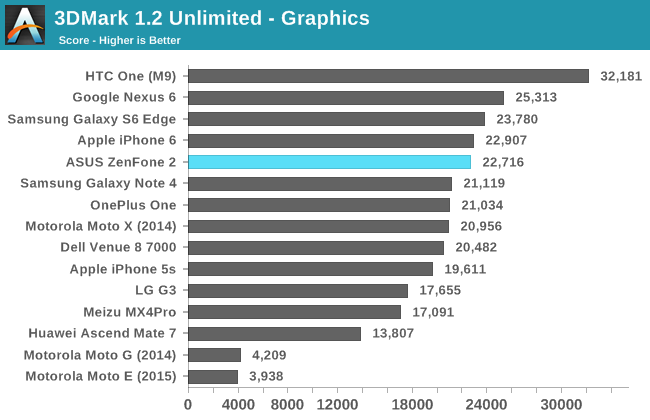
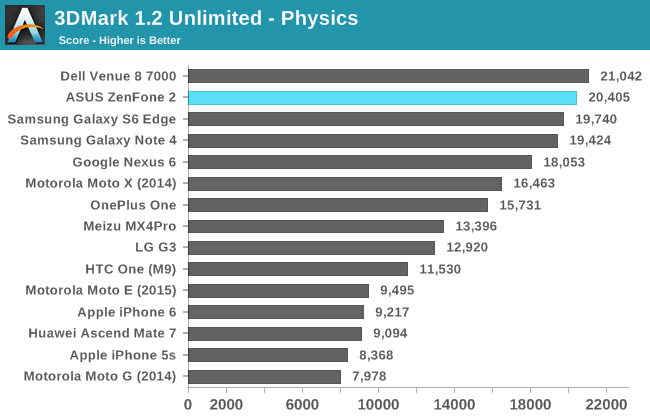
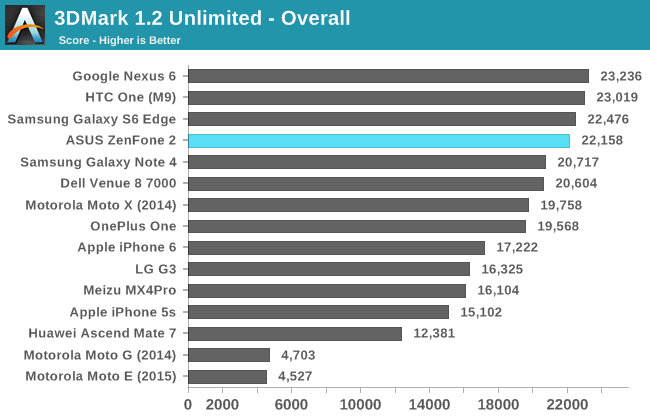
The ZenFone’s performance in 3DMark is very good, and is one of the highest that we’ve seen. Much of this is due to the score in the physics test, which bests even the Galaxy S6 that had previously topped the chart, and second only to the Venue 8 7000 tablet. In the graphics test it achieves a score similar to that of the iPhone 6. The overall weighted average of the two tests puts the ZenFone 2 in fourth place, between the Galaxy Note 4 and the Galaxy S6 Edge.
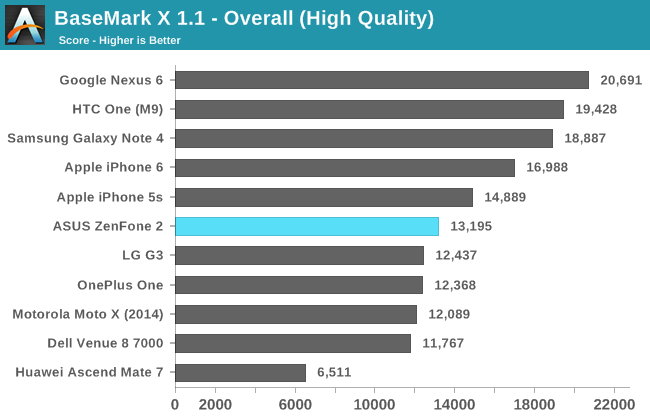
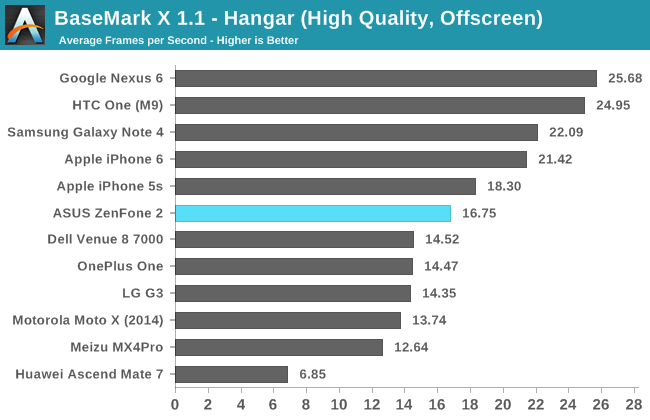
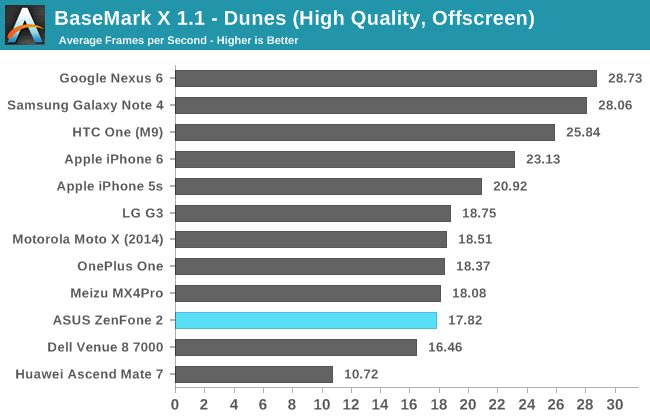
In BaseMark X we see that the ZenFone 2 stumbles compared to the G6430 implementation in the iPhone 5s. Despite the higher clock speed on the GPU, it trails the iPhone 5s in both the Dunes and Hanger tests. The final score ends up right in the middle of the chart. It’s not as quick as the iPhone 5s and faster devices, but it’s quicker than those that use Snapdragon 801 and Adreno 330.
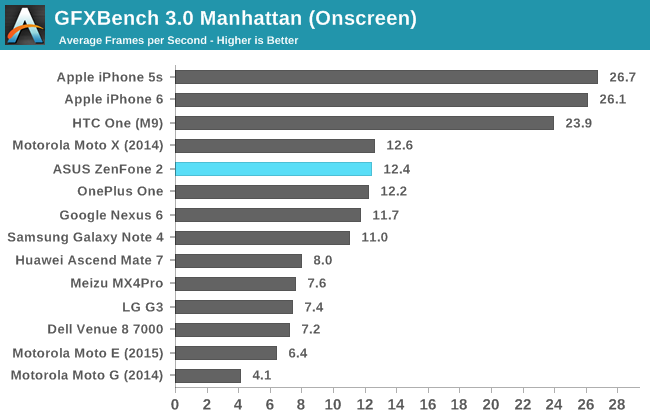
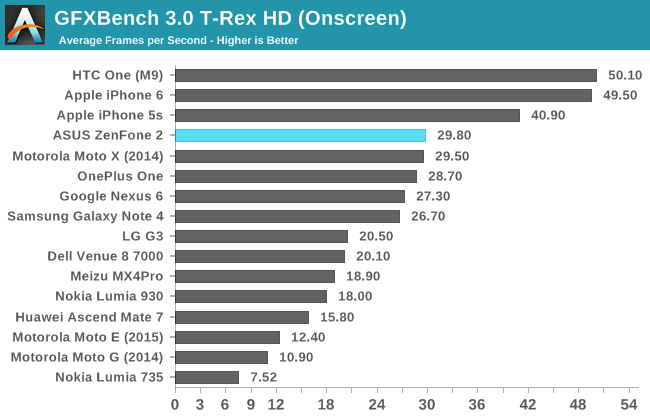
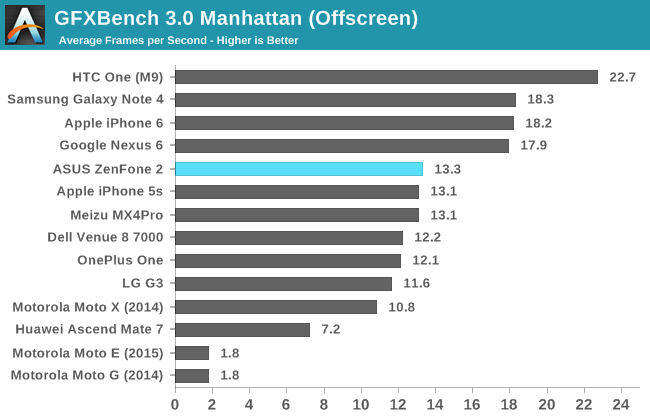
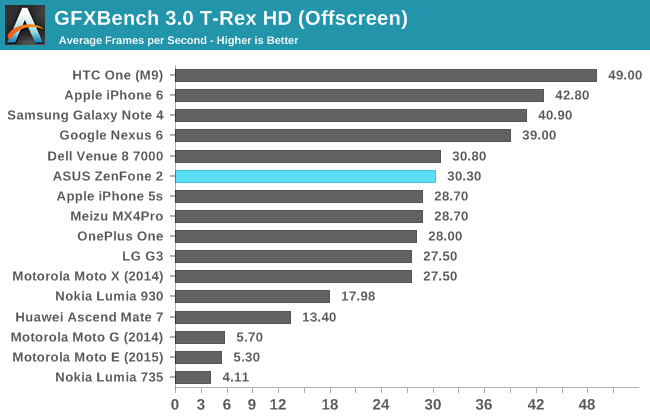
Our last benchmark is GFXBench. In the off screen 1080p tests we see that the ZenFone 2 is slightly quicker than the iPhone 5s in both Manhattan and T-Rex HD. The differences are small enough to be attributed to test variance, but the important point is that the G6430 GPU ends up being as quick as the implementation in Apple’s A7 SoC. The fact that it’s only as quick as the iPhone 5s despite its higher clock speeds indicates that PowerVR GPU drivers on Android are not as well optimized as on iOS, and it would be great to see GPU performance improve a little bit down the road via driver improvements.
Overall, the GPU in the ZenFone 2 is more than fast enough to run the OS smoothly and run any 2D or 3D games a user will want to play. The performance is substantially better than any other phone at this price point. It looks like there's still a gap between the optimization of PowerVR GPU drivers on iOS versus Android, but despite that the ZenFone 2 still delivers performance that I know won't disappoint any of its buyers.










147 Comments
View All Comments
blzd - Thursday, May 28, 2015 - link
That makes sense as Google released an update specifically for the Nexus 6 to have all 4 cores run at the same time during normal phone operations.Apparently it brought snappier performance at the cost of slight battery reduction.
As usual though, battery improvements tend to be placebo.
tipoo - Tuesday, May 26, 2015 - link
Everyone was quick to blame the Intel SoC and the alleged x86 power penalty, but this looks like pretty good proof they just picked an inefficient display panel.Though it could still have something to do with the SoC - the review also noticed the screen backlight adjustment to the colors on screen was rather aggressive, that's an Intel technology for saving power. I wonder if other SoCs are just better at it. Less noticable, while saving more power?
epr118 - Tuesday, May 26, 2015 - link
Hey Brandon, you mention the double tap to wake, but the phone also has a double tap to shut off the screen. You just need to be on the home screen and not in an app for it to work.icwhatudidthere - Tuesday, May 26, 2015 - link
You can be in an app, you just have to double tap on the notification bar.epr118 - Tuesday, May 26, 2015 - link
Ah, I never tried that. Thanks for the tip!Brandon Chester - Tuesday, May 26, 2015 - link
I was unaware of this, thanks for the tip.shadowjk - Tuesday, May 26, 2015 - link
I'm curious how long the battery would last streaming Spotify or similar over mobile network. This is a use case where the inefficient screen doesn't matter as much. Would be interesting to see if the CPU can service that without staying awake constantly burning loads of power, and how power efficient the modem is.My current device doesn't last 8 hours streaming music, and I need to carry powerbanks to keep it fed.
tipoo - Tuesday, May 26, 2015 - link
"Because our iOS benchmark only supports a single IO thread,"Doesn't HFS+ only support a single IO thread? So the benchmark wouldn't be the issue. HFS+ also has other weird limitations for 2015 like using 16 bit processor width and only single programs can access it at once, I think.
middlehead - Tuesday, May 26, 2015 - link
Does anyone know if this thing supports MHL? I've seen conflicting reports on several spec sites. If it does I might have to buy it, flaws and oversized screen be damned.ketacdx - Tuesday, May 26, 2015 - link
I don't have an MHL adapter to test but I did just check my slimport to HDMI adapter and no luck :(